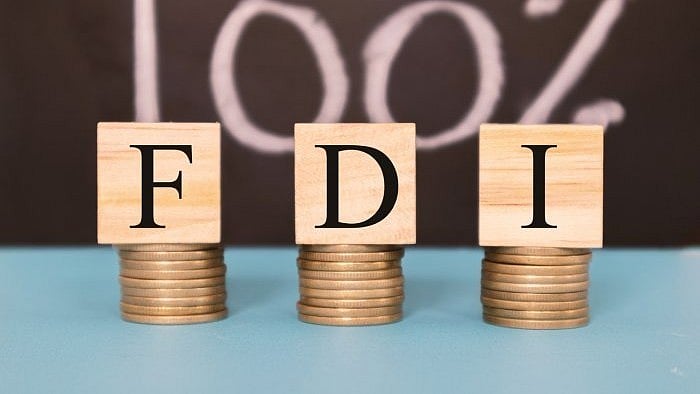
Representative image of FDI.
Credit: iStock Photo
Srinagar: The ambitious policy launched by the government in 2022 to attract foreign investment to Jammu and Kashmir has failed to deliver any substantial results, with the Union Territory recording the lowest foreign direct investment (FDI) inflows in the country over the past five years, official data shows.
Despite the Centre’s aggressive push to showcase J&K as a new economic frontier after the abrogation of Article 370 in August 2019, foreign investors have largely stayed away. According to data tabled in the Rajya Sabha earlier this year, Jammu and Kashmir attracted a meagre ₹10.52 crore in FDI equity inflows since 2020 — the lowest among all states and Union Territories.
In comparison, India’s cumulative FDI equity inflow during the same period stood at ₹21.62 lakh crore, underscoring the near-absence of foreign investor interest in the region.
Year-wise, J&K’s inflows reveal a grim picture: ₹1.67 crore in 2020–21, ₹1.23 crore in 2021–22, ₹6.03 crore in 2022–23, a token ₹0.02 crore in 2023–24, and ₹1.57 crore in the first half of 2024–25.
By contrast, Maharashtra led the country with over ₹5.54 lakh crore in cumulative FDI inflows, followed by Karnataka (₹3.88 lakh crore), Gujarat (₹2.28 lakh crore), Delhi (₹2.02 lakh crore), and Tamil Nadu (₹1.18 lakh crore). Even smaller Union Territories such as Dadra and Nagar Haveli and Daman and Diu recorded higher inflows than Jammu and Kashmir.
Lofty promises, little progress
The dismal figures sharply contrast the government’s upbeat narrative post-2019, when it pitched Jammu and Kashmir as a major investment destination following the revocation of its semi-autonomous status. The government had promised to transform the conflict-ridden region into an “industrial and tourism hub” through policy reforms, global investor summits, and new land-use rules for setting up industries.
In January 2022, the J&K administration unveiled an Industrial Policy aimed at attracting ₹70,000 crore in investment and creating five lakh jobs. Officials held roadshows in Dubai, Singapore, and several Indian metros to court investors, while a massive “Global Investors Summit” was announced to showcase the region’s potential in tourism, horticulture, IT, renewable energy, and handicrafts.
However, three years later, little has materialized on the ground. Several proposed projects are still at the memorandum-of-understanding (MoU) stage, with no tangible infrastructure or manufacturing units to show for it. The promised industrial estates in Kathua, Samba, and Pulwama remain largely on paper, while land allotments to private players have faced bureaucratic delays and public opposition in some areas.
Security and structural hurdles
Officials and analysts attribute the poor response to multiple factors — continued security concerns, bureaucratic red tape, fragile connectivity and absence of a large local market.
“Investors look for stability and predictability, both of which remain in short supply in J&K despite the official claims of normalcy,” said an economist at Kashmir University.
While the government maintains that “investment proposals worth thousands of crores are in the pipeline,” the latest FDI data reflects a deep gap between policy intent and investor confidence.